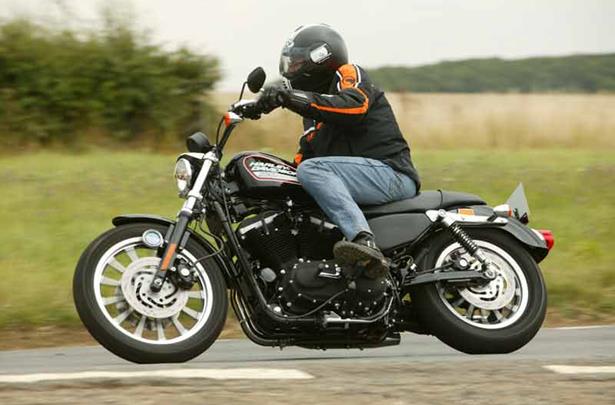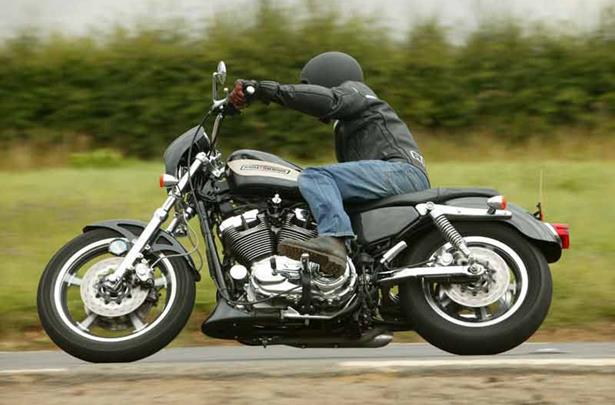How to Remove Harley Exhaust: Quick & Easy Guide
To remove a Harley exhaust, first cool the bike down, then loosen and detach the exhaust mounting bolts. Ensure you also disconnect the exhaust system from the cylinder heads.
Removing a Harley exhaust system is a straightforward process for enthusiasts looking to enhance their motorcycle’s performance or style. It’s a vital maintenance skill that every Harley owner should know. Undertaking this task requires a few essential tools, such as a socket set and wrenches, and a bit of know-how to avoid damage to the motorcycle.
By removing the exhaust, riders have the opportunity to install aftermarket options for increased horsepower, better sound, or a new look. This simple yet effective tweak can make a significant difference in your motorcycle’s overall performance and aesthetics, making it a popular project among Harley-Davidson aficionados. With the right approach and attention to detail, you can successfully remove your Harley’s exhaust, preparing it for an upgrade or necessary repairs.
Preparing For Exhaust Removal
Safety measures are paramount in the process of removing a motorcycle exhaust, particularly a Harley. Prior to embarking on this mechanical endeavor, it is crucial that one is equipped with protective eyewear and durable gloves to prevent any injuries from potential debris or hot surfaces.
Gathering the right tools and equipment is equally essential. This typically includes a set of sockets and wrenches, an exhaust spring puller tool for models that require it, and penetrating oil to ease the removal of rusted or seized parts. Preparing these items beforehand streamlines the removal process and contributes to a safer working environment.
Identifying Your Harley Model
Identifying your Harley motorcycle model is crucial before attempting to remove its exhaust system. Each model may have unique specifications and exhaust designs, which dictate the appropriate removal procedure. The first step in this process involves checking the motorcycle’s manual, which provides detailed information on the motorcycle’s structure and components. It’s essential to understand the specifics of your Harley’s exhaust system.
It is also important to recognize different exhaust system types as they can influence the complexity of the removal process. Typically, Harley motorcycles feature either a 2-into-1 system, where two pipes merge into a single muffler, or a dual system, with two separate pipes and mufflers. Knowing the correct type ensures you have the right tools and instructions at hand.
How To Remove Harley Exhaust Safely
Before removing the Harley exhaust, it’s crucial to ensure that the motorcycle is stable and secure. Position the bike on stands to maintain steadiness throughout the process. This precaution is not only for safety but also provides easy access to the exhaust system which will be worked on.
Electrical safety is paramount during this procedure. Always disconnect the battery before beginning any work on the motorcycle’s exhaust. This simple step can prevent potential accidents related to electrical shorts or unexpected power engagement. It’s a necessary measure that protects both you and the motorcycle’s electrical components.
Loosening Exhaust Mounting Bolts
Before attempting to remove Harley exhaust systems, it is essential to spray penetrating oil on the mounting bolts. This helps in loosening tight or corroded bolts, making the disassembly process smoother and preventing potential damage to the exhaust components. It is recommended to let the oil sit for a few minutes to ensure maximum penetration and efficacy.
Ensuring the use of appropriate tools is critical to avoid stripping the bolts. Utilize a set of sockets and wrenches that match the bolts’ size perfectly. By doing so, you guarantee better grip and torque, allowing the bolts to be loosened with ease while protecting the integrity of both the tool and the bolt.
Detaching The Exhaust System
Detaching the exhaust system from your Harley is a straightforward process, provided you have the right tools and take appropriate safety precautions. Begin by removing the mounting hardware and brackets that secure the exhaust to the motorcycle. This will typically require a set of sockets or wrenches. Ensure that you keep all removed hardware in a secure location for reassembly.
Once the mounting elements are dismantled, you can gently slide the exhaust off its headers. It’s critical to perform this step with care to avoid damaging any components. If the exhaust does not slide off easily, double-check for any additional fasteners you may have missed or rust that might be causing the exhaust to stick.
Handling O2 Sensors And Cables
O2 sensors are critical components in the exhaust system, monitoring the levels of oxygen and helping to maintain optimal engine performance. To locate the oxygen sensors, inspect the exhaust system; the sensors are generally positioned before and after the catalytic converter. Each sensor will have a wiring harness attached, which is essential for their operation.
After finding the O2 sensors, the next step is detaching the sensors with caution. It’s imperative to handle the wires and connections gently to prevent any damage. Use an O2 sensor socket or a wrench to remove the sensors from the exhaust pipe. Be mindful of the sensor’s threads and the exhaust material to avoid any stripping or cross-threading, which could complicate reinstallation.
Cleaning And Inspection Post-removal
Proper inspection of the exhaust ports is crucial after removing the Harley exhaust. Look for signs of rust, cracks, and excessive wear that may require attention. Ensure that gaskets are intact and if not, replacements should be considered. Cleaning debris from the exhaust and its mounting areas prevents future blockages and maintains optimal performance.
Use a soft brush or compressed air to clean any residual dirt or carbon build-up. It’s essential to wear safety glasses during this process to protect your eyes from particles. Once clean, examine the areas for any damage that could impact the reinstallation of the exhaust system.
Preparing For New Exhaust Installation
Before installing a new exhaust on your Harley, it’s crucial to thoroughly compare it with the old one for potential fitment issues. Begin by placing both exhaust systems side by side, ensuring that the mounting points and overall design align correctly. Check every component, such as bolts, gaskets, and clamps, to confirm that they match and are in perfect condition. Disparities might not only hinder the installation process but could also affect the performance and sound of your motorcycle.
Assessing the condition of all parts before proceeding confirms that you won’t face unexpected setbacks once you start the installation. If any parts appear damaged or missing, acquire the necessary replacements beforehand to secure a smooth transition from the old to the new exhaust system. Taking this essential precaution ensures an efficient installation, ultimately enhancing your Harley’s appearance and sound output.
Troubleshooting Common Removal Issues
Removing a Harley exhaust can be challenging due to stuck bolts and clamps. To address these issues, begin by applying a penetrating oil generously in and around the bolts and clamps. Allow the oil to work its way into the threads for at least a few hours, or even overnight for optimal results. If the bolts remain stuck, try employing a bolt heating technique, carefully applying heat with a blow torch, as this can expand the metal and break the corrosion seal. Nonetheless, exercise caution to avoid damage to surrounding components.
Corrosion management is crucial in preventing exhaust system components from seizing up. Regularly inspect your exhaust for signs of rust or corrosion and employ preventative measures such as applying anti-seize compounds to bolts and clamps during installation. This can significantly ease future removals. Additionally, keeping the exhaust system clean from road salts and environmental debris goes a long way in reducing the likelihood of corrosion-related issues.
Final Checks And Advice
Prior to firing up your motorcycle post-exhaust removal, it’s essential to double-check every connection that was touched during the procedure. This precaution ensures all clamps, bolts, and mounts are securely fastened. A thorough inspection could prevent potential exhaust leaks or other issues that might arise from loose components. Remember, vigilance during reassembly can save time and money on future repairs.
- Clean your exhaust system regularly to remove grime and prevent corrosion.
- Inspect the exhaust seals and gaskets for wear and tear to avoid leaks.
- Use the proper tools for any adjustments to avoid damaging the pipes.
- Listen for unusual sounds, which can indicate that your exhaust system needs attention.
- Follow the manufacturer’s specifications for servicing and replacement parts.
Frequently Asked Questions
What Tools Are Needed To Remove Harley Exhaust?
The tools typically required include a ratchet set, wrenches, and penetrating oil for easier disassembly.
How Long Does Harley Exhaust Removal Take?
Harley exhaust removal can be completed in about an hour for someone experienced, but novices should allow for more time.
Can I Remove Harley Exhaust Without A Lift?
Yes, Harley exhaust can be removed without a lift, though having one makes the process easier and less physically demanding.
Is It Safe To Remove My Harley’s Exhaust Myself?
Removing your Harley’s exhaust is safe when proper steps are followed and you have some mechanical know-how; else, professional help is advised.
What Are Common Mistakes When Removing Harley Exhaust?
Common mistakes include stripping bolts, not supporting the bike securely, and rushing through the process without allowing penetrating oil to work.
Conclusion
Removing your Harley’s exhaust can be a straightforward task. By following the steps outlined, you’ll ensure a successful removal process. Remember, safety is paramount, and proper tools are essential. For assistance, refer back to this guide or seek professional help.
Ready for an upgrade or maintenance? You’re now equipped to tackle the job.

